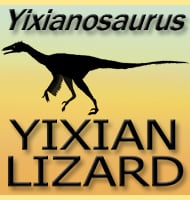Hongshanopterus
In Depth The teeth of Hongshanopterus extend past the first third of the skull. Not only does this give Hongshanopterus more teeth than other istiodactylids, it is taken as a marker for Hongshanopterus being a basal member of the group. Further Reading – A primitive istiodactylid pterosaur (Pterodactyloidea) from the Jiufotang Formation (Early Cretaceous), northeast … Read more
